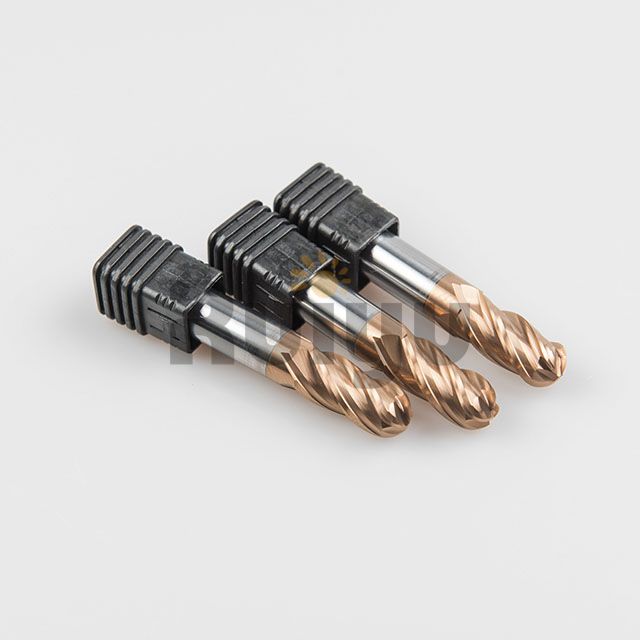
Introduction
Let’s be real—if you’ve ever dealt with CNC machining or metal cutting, you know how expensive and frustrating it can be when your end mills wear out too fast. One minute your tool is slicing cleanly, and the next it’s burning up or breaking mid-job. Not fun. But here's the good news: with some smart techniques, a bit of maintenance, and a few insider tips, you can dramatically extend the life of your end mills.
Why End Mill Longevity Matters
Cost Efficiency
The longer your end mills last, the fewer replacements you’ll need. Sounds obvious, right? But when you factor in machine downtime, labor, and poor surface finishes caused by dull tools, the cost-saving potential becomes massive.
Precision and Performance
A sharp, well-maintained end mill ensures clean cuts, tight tolerances, and fewer rejects. In high-precision industries, this can be the difference between success and scrap.
Common Causes of End Mill Wear
Before we talk about solutions, let’s understand the culprits behind tool wear.
High Cutting Temperatures
Excessive heat is the silent killer of end mills. It weakens the cutting edge, degrades coatings, and leads to micro-chipping or full-on tool failure.
Improper Speeds and Feeds
Using the wrong speed or feed rate can wear out your tool faster than you can say "tool change." Too fast, and you risk overheating. Too slow, and you get rubbing instead of cutting.
Material Hardness
Machining tough materials like titanium or hardened steel? They’ll eat through your tools if you're not using the right end mills or setup.
Lack of Proper Lubrication
No coolant = more heat + more friction = a shorter tool life. It’s a simple equation with painful consequences.
Signs of End Mill Wear
So how do you know it’s time to pull that end mill and check it out?
Visual Wear Indicators
Look for signs like rounding of the cutting edge, chipped flutes, or coating discoloration. These are red flags that your tool is nearing its end.
Dimensional Inaccuracy
If your parts are suddenly out of spec, your end mill might be the villain. Worn tools can’t maintain the same precision as sharp ones.
Chatter and Poor Surface Finish
Hearing a strange vibration or noticing rough surfaces? Your end mill might be crying for help.
How to Detect Wear Early
Scheduled Inspection Routines
Make inspections a routine. A quick visual and dimensional check between jobs can prevent a lot of heartache.
Using a Tool Presetter or Microscope
If you're running a high-volume operation, investing in a tool presetter or microscope is a game-changer. It lets you catch wear before it becomes catastrophic.
CNC Machine Monitoring Systems
Modern CNCs often include monitoring features. Use them! They'll alert you to abnormal cutting forces or vibrations—early signs of tool wear.
Regrinding: When and Why?
What Is Regrinding?
Regrinding is the process of resharpening a dull end mill to restore its cutting ability. Think of it like sharpening a knife.
Benefits of Regrinding
When Should You Regrind an End Mill?
A good rule of thumb: regrind before significant edge chipping or tool breakage occurs. If you wait too long, it might be too damaged to save.
Maintenance Tips to Prolong End Mill Life
Use the Right Tool for the Job
Seems simple, but you'd be surprised how many people use the wrong type or size of end mill. Don’t use a roughing mill for finishing, or a finishing mill for heavy roughing.
Optimize Cutting Parameters
Dial in your speeds and feeds based on the material, tool diameter, and depth of cut. Don’t just guess—use data or manufacturer recommendations.
Apply Proper Coolant and Lubrication
Use flood coolant, mist, or through-spindle coolant depending on the job. The goal is to reduce friction and evacuate chips efficiently.
Store End Mills Properly
Tossing your tools into a drawer? Big no-no. Use foam-lined cases or tool holders to avoid damage to cutting edges.
Use Coated End Mills When Possible
Coatings like TiN, TiAlN, or AlCrN reduce friction, improve heat resistance, and increase tool life—especially in tough materials.
Choosing the Right End Mill for Extended Use
Coatings Matter
Choose coatings based on your material. For example:
Geometry Considerations
Use variable flute designs to reduce chatter. Pick the correct helix angle for your application—higher angles for aluminum, lower for harder steels.
Final Thoughts
Extending the life of your end mills isn’t rocket science. It's a blend of observation, knowledge, and habit. If you check for wear regularly, regrind when needed, and follow best practices for machining and storage, you’ll squeeze every bit of value from your tools—and avoid a lot of headaches along the way.
FAQs About End Mill Wear and Maintenance
Can all end mills be reground?
Not all. Some geometries or coatings don’t hold up well to regrinding. Check with your supplier or tool grinder for specifics.
How many times can you regrind an end mill?
Typically 2–3 times, depending on wear and how much material needs to be removed during sharpening.
What’s the best way to clean an end mill?
Use a soft brush or ultrasonic cleaner. Avoid harsh chemicals or wire brushes that could damage the coating or edge.













